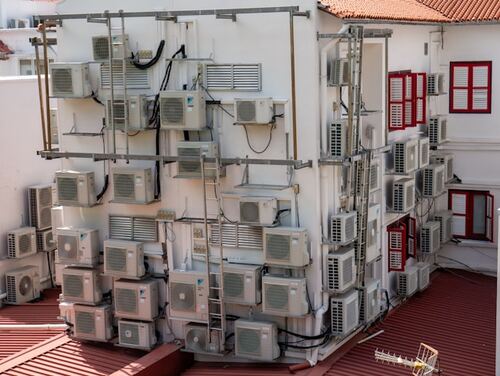Cooling systems are incredibly efficient for keeping homes comfortable, particularly in hot, dry climates. However, they require regular maintenance to perform at their best. Proper maintenance extends the life of your system and ensures that it operates at peak efficiency, keeping energy costs down and indoor air quality high. Here, we’ll discuss how to keep your evaporative cooler in excellent condition and ensure it continues to cool your home effectively.
Regular Cleaning
One of the primary aspects of maintaining an evaporative cooling system is regular cleaning. Dust, pollen, and other debris can easily accumulate on the cooling pads, reducing the system’s efficiency and increasing energy consumption. Here are some cleaning steps to follow:
- Turn Off and Disconnect: To ensure safety, always turn off the system and disconnect it from the power supply before cleaning.
- Flush the Water Tank: Drain and clean the water tank to prevent mineral deposits from forming.
- Wipe Down the Exterior: Dust and wipe down the unit’s exterior to keep it looking good and prevent dust from entering the system.
Inspecting and Replacing Cooling Pads
Cooling pads are central to the functionality of an evaporative cooler. Over time, these can become clogged with mineral deposits and dirt. It hinders airflow and reduces cooling efficiency. Inspect the pads every season to check for signs of wear, such as:
- Thin or Brittle Pads: If the pads feel thin or brittle, it’s time to replace them.
- Unpleasant Odours: Foul smells often indicate bacteria or mould growth, signalling the need for a new pad.
- Water Stains: Discoloration and water stains can point to mineral buildup, which impacts cooling.
Regular Water Level Checks and Draining
Water is essential to your evaporative cooler’s operation, so monitoring the water levels is crucial. Too little water can lead to overheating, while too much can cause flooding and water wastage. Regularly checking the water levels is essential. Also, it’s a good practice to drain and refill the tank at least once a season. Draining the tank helps flush out accumulated mineral deposits or contaminants, which can impede performance and damage the unit over time.
Inspecting the Fan and Motor
The fan and motor are critical components in an evaporative cooler and need routine inspections. Dust, dirt, and moisture can wear on the motor over time, so inspect it every few months. Here’s what to look for:
- Fan Blades: Make sure the fan blades are clean and free of obstructions.
- Motor Housing: Look for any rust or signs of wear on the motor housing.
- Lubrication: Lubricate the motor, if necessary, to reduce friction and wear, especially in older models. This step can be crucial for extending the life of your evaporative cooling system.
Monitoring Airflow and Vents
Another critical monitoring factor is the airflow from the unit and through the vents. Over time, dust and debris can accumulate in the ducts and vents, obstructing airflow and making the system work harder. Regularly check the vents to ensure they are clear, and consider scheduling a professional duct cleaning once a year to improve overall air quality and efficiency. Additionally, ensure all windows or doors are slightly open while the system runs to allow for proper air circulation.
An evaporative cooling system can provide your home with fresh, cool air while saving energy costs, but only if properly maintained. By incorporating regular cleaning, inspections, and seasonal care, you can keep your system in top condition and enjoy a comfortable indoor climate all summer. With just a little attention and care, your evaporative cooler will continue to operate efficiently, providing refreshing relief during the hottest months of the year.




